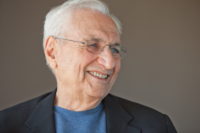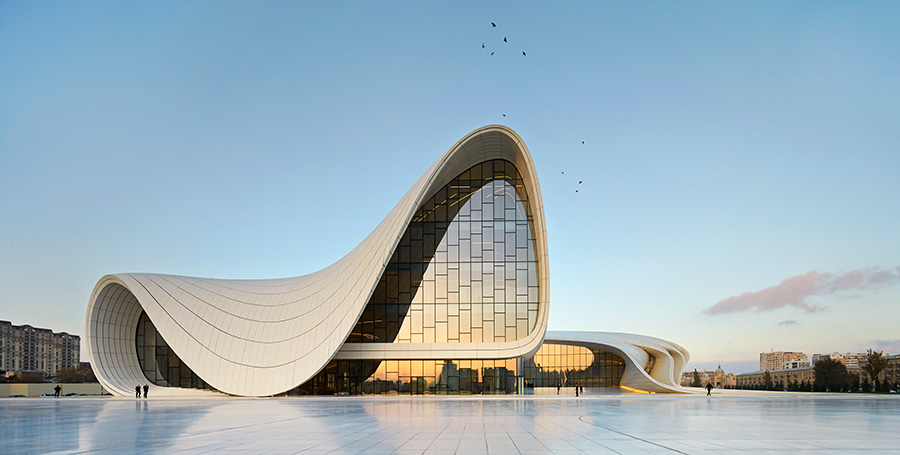Breaking News
Zaha Hadid Dies at 65
The world’s most celebrated woman architect passed away in Miami after suffering a heart attack.

Zaha Hadid
Architect Zaha Hadid has passed away at the age of 65.
Photo © Mary McCartney

Zaha Hadid
Messner Mountain Museum
Italy
Photo © Harald Wisthaler

Zaha Hadid
Heydar Aliyev Cultural Center
Baku, Azerbaijan
Photo © Hufton+Crow

Zaha Hadid
London Aquatics Center
London
Photo © Hufton+Crow

Zaha Hadid
Guangzhou Opera House
Guangzhou
Photo © Iwan Baan

Zaha Hadid
MAXXI Museum of XXI Century Arts
Italy
Photo © Richard Bryant

Zaha Hadid
Phaeno Science Center
Wolfsburg, Germany
Photo © Werner Huthmacher

Zaha Hadid
BMW Central Building
Leipzig, Germany
Photo © Helene Binet

Zaha Hadid
Contemporary Arts Center
Cincinnati
Photo © Roland Halbe

Zaha Hadid
Vitra Fire Station
Weil am Rhein, Germany
Completed in 1993, Hadid’s first realized project helped launch her to international fame.
Photo © Christian Richters










Architects & Firms
Zaha Hadid, the acclaimed Iraqi-British architect known for her sensuous curvilinear structures that blurred the line between architecture and art, died Thursday morning in a Miami hospital.
According to a statement issued by her office, Hadid died suddenly of a heart attack while being treated for bronchitis. The architect was 65.
Architect Robert A. M. Stern, Dean at Yale’s architecture school where Hadid was teaching an advanced studio course said, “Zaha was an amazing person, and a great friend to me. I loved every minute I could spend with her,” he said. “She is one of the great talents and innovators of our time.”
Hadid, the Norman R. Foster visiting professor at Yale, was expected to return to the school next week. “She was a great teacher,” said Stern. “Her students held her in love and awe.”
Hadid was born in Baghdad in 1950 and studied at the American University of Beirut and later the Architectural Association in London. She established her firm, Zaha Hadid Architects (ZHA) in 1979 in London.
Hadid’s work with business partner Patrik Schumacher was characterized by biomorphically-shaped forms achieved through parametric design.
She first gained acclaim for her first major work, a firehouse at the Vitra campus in Weil Am Rhein, Germany. She went on to design major projects including the The Aquatics Center for the 2012 Olympic Games in London (2011), Heydar Aliyev Center in Baku, Azerbaijan (2013). Her gravity-defying Messner Mountain Museum in the Italian Alps was completed last year.
In addition to buildings, Hadid designed objects ranging from furniture to sneakers.
She is widely regarded as the world’s foremost woman architect, garnering the profession’s highest honors including the RIBA Gold Medal (2016) and the Pritzker Architecture Prize (2004) —the first woman to receive both honors. Hadid also won RIBA’s Stirling Prize, the UK’s most prestigious architecture prize, twice. Queen Elizabeth II bestowed her with the title of Dame Commander of the Order of the British Empire in 2012.
“The Pritzker Family and the Pritzker Architecture Prize organization are deeply saddened by the passing of Dame Zaha Hadid. She was truly a pioneer in the field of architecture,” the Pritzker Prize said in a statement.
RIBA President Jane Duncan said: “This is absolutely terrible news. Dame Zaha Hadid was an inspirational woman, and the kind of architect one can only dream of being. Visionary and highly experimental, her legacy despite her young age, is formidable.”
Said architect Peter Eisenman, who taught at Yale with Hadid. "She was an important person for her gender, but, for me, the most important thing was that she was a defender or architecture. And that's what we need more than anything else today, someone who believes in and defends the discipline."
In 1988, Eisenman participated with Hadid along with architects Bernard Tschumi, Frank Gehry, Coop Himmelb(l)au, Daniel Libeskind, and Rem Koolhaas in the seminal 1988 MoMA exhibition Deconstructivist Architecture—a show for “architects who were experimenting with new forms and new ideas,” he explained. “Zaha’s participation was very important as a woman—that [architecture] wasn’t just an all-boys club.”
Tschumi, who invited Hadid to teach architecture studios during his tenure as dean at Columbia’s Graduate School of Architecture, Planning, and Preservation from 1988 to 2003, called her “the best in a generation,” when reached by phone.
“She was almost working in another universe, and I mean that very much as a compliment,” he said. “She was not bound by conventions or clichés that architects tend to be stuck in.”












